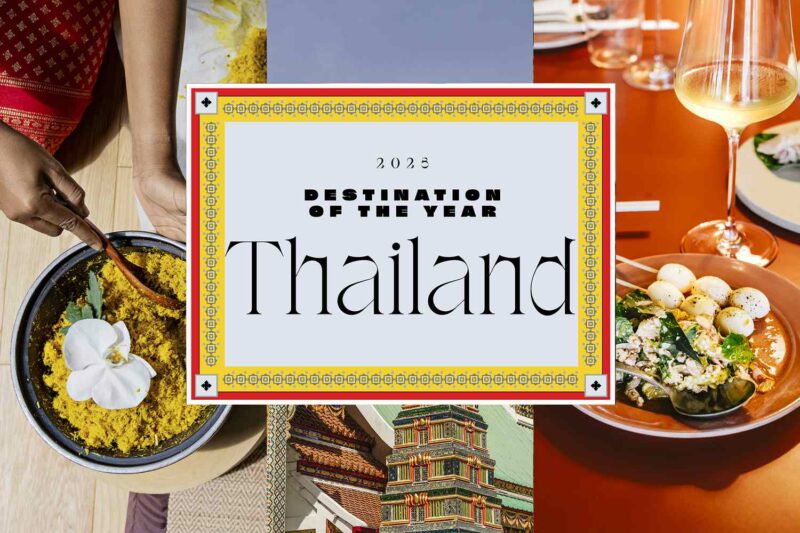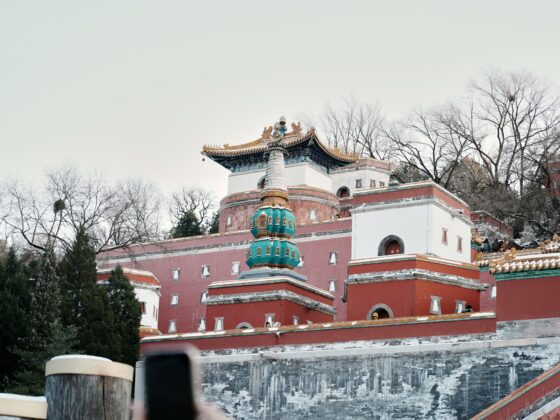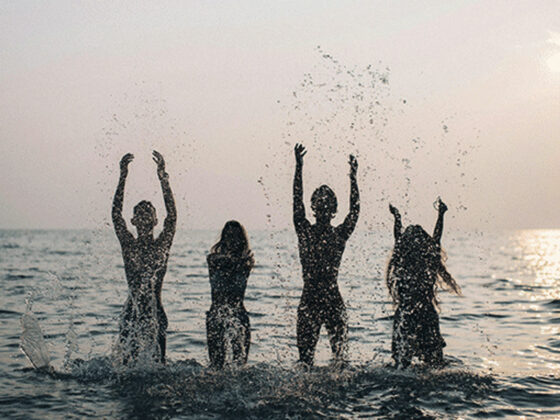The Scoop // Clients no longer buy logos, they buy the feeling of belonging.
September has always been my favorite month. Back to school energy never left me, and September still feels like a fresh start. For luxury it also marks the beginning of the most important Fashion Week season of the year and the 100 most profitable and defining days of the calendar.
In Paris, we call this back to school period la rentrée and it carries a renewed sense of energy.
Conversations around the dinner table sound familiar: How was your summer? Where did you travel? Where did you stay? Are you glad to be back? Yet these questions carry a new weight.
Today, where you have been, and even more where you choose to be, says far more about status than the bag on your shoulder. It is all about experience.
For those that are here every week, you know this is my favorite time of the month, because one of the things I love most is sharing with you here on The Scoop. I write these series mainly from some sort of transport, and this one is no exception. I am writing to you sitting on the plane from Miami to Paris.
For those who are new here, The Scoop is where I share the ideas that stay with me, the conversations that spark reflection, and the advice or moments that make me pause. It’s about what is moving through my mind, what I am noticing, and what I believe is shaping the future of luxury.
Let’s dive in!
This week my focus is on a conversation I had a couple of weeks ago with Florence Roussel, who said something that has stayed with me: experience for experience. Together we explore why getting experience right matters and the essentials every brand must master to move beyond the short-term game and ensure lasting relevance with every experience-led activation.
I first met Florence in 2021 when I interviewed her for my book Beyond Luxury: The Promise of Emotion, where we spoke about experience. Since then, she has continued to shape the luxury and hospitality industries in bold ways. After leading merchandising and retail at Disneyland Paris, she launched her own consulting practice and later took senior marketing roles at Radisson Hotel Group. Today, at Monaco’s Société des Bains de Mer, she is driving a three-year strategy to reposition Monaco as a cultural and luxury hub, blending retail, partnerships, and experiences with real meaning.
My favorite of her initiatives is the first Grand Prix de la Haute Joaillerie, set to debut in October 2025. More than an event, it is a reimagining of how watchmaking and high jewelry can be lived and felt in Monaco, bringing a cultural energy the Principality has not seen before.
This struck me because it echoes what I explored in Beyond Luxury: The Promise of Emotion. Luxury now splits into two markets: experiences built around products, and experiences that stand as the product itself. The latter is booming, hospitality and travel capture the imagination and drive desire. But the former has weakened. Too often, experiences are staged around products that have lost their excellence in craftsmanship and quality. What was once the soul of luxury risks being replaced by widely accessible experiences, leaving behind a hollow shell of brand equity and diluting the very aura that made these brands desirable.
This time, my conversation with Florence was about the importance of experience with soul. In a world where everything has turned into an “experience,” massified and replicated, our dialogue circled around meaning and the way brands design experiences can either strengthen or erode it.
I think back to how beauty once served as the natural entryway into luxury. For decades, a $35 lipstick was the first step into a world. A perfume at $40 or $50 could be both a ritual and a decorative object in your home, a small piece of a Maison you could carry with you or gift. These were powerful gestures. They felt meaningful. They created desire.
Now, this entry point has shifted. Instead of a lipstick, it is often a cappuccino with a logo foamed on top. A branded coffee shop promising access for the price of branded coffee or cake. When Dior first did this in Saint-Tropez in 2010, it felt rare and magical. But now, when every pop-up has a café, when every café has a logo, the magic fades. And it makes me wonder: is this the right way to welcome someone into the world of luxury?
These are the questions that run through my mind and that I often encourage leaders I work with to ask: does it make sense for us, in our brand? Does it resonate with today’s culture? What is our value add? Can we offer something that will withstand time? Or are we doing this just because everyone else is?
It immediately brought me back to 2020, when I was Head of Innovation at Chanel. Back then, the obsession was tech for tech. Technology for the sake of it, not because it solved anything. One of the clearest examples was the rollout of CRM and client communication apps inside boutiques. The theory was that clients would adopt these branded apps to communicate with their Fashion Advisors, revolutionizing service and centralizing all data. The reality was very different.
As one FA told me: “My client calls me at 11:30 pm to ask what to wear tomorrow. Do you think I’ll tell her to download an app she doesn’t even have?”
It was the perfect illustration of technology adding friction instead of intimacy. Advisors were held accountable to KPIs on platforms no client used. The apps did nothing to improve the boutique experience or strengthen relationships.
Today, we are seeing the exact same phenomenon with experiences.
Florence reminded me of the context. For decades, luxury was defined by inaccessibility. It was not just essence, it was logistics. Before Henry Racamier took the reins at Louis Vuitton in 1977, Vuitton had only two stores, in Paris and Nice. In less than fifty years, Maisons exploded across the globe, built international retail footprints, and mastered control over distribution and image. Luxury expanded, but the aura of inaccessibility remained intact.
This created a challenge: how to break the ice with aspirational audiences, especially younger ones.
The first response was classic marketing: broader ranges, more accessible entry price points, impulse products, perfumes, and beauty lines. Beauty became the bridge. Lipstick and perfume were legitimate ways in, gestures that carried meaning. As Dana Thomas explains in Deluxe: How Luxury Lost Its Luster, this was a turning point. By lowering the threshold of entry, luxury brands expanded their reach but also began blurring the line between exclusivity and accessibility.
Then came activations. Comme des Garçons opened its Guerrilla Store in Berlin in 2004. Chanel launched the Mobile Art Pavilion in Hong Kong in 2006, designed by Zaha Hadid to celebrate the 2.55. Louis Vuitton staged its Harajuku takeover in 2009, centered on its capsule with Takashi Murakami. Each of these projects was rare, ambitious, and deeply rooted in the DNA of the Maison. More than marketing stunts, they were cultural statements.
The next turning point was Dioriviera in Saint-Tropez in 2015. A private beach, entirely redecorated with Dior codes, became the stage for a dedicated summer capsule. For the first time, lifestyle experience became a true 360° activation. The capsule aligned, the clientele aligned, and the brand codes were alive in space. The link made sense. It created focus in a traditionally quiet season and attracted younger affluent clients, showing the power of experience to expand reach without diluting meaning.
But success attracts imitation. And imitation dilutes.
Soon, other brands raced to follow their clients to holiday spots. Agencies moved in. Florence described the system: pre-negotiate “exclusive” rights with fashionable venues across Saint-Tropez, Cannes, and Monaco. Then send the same deck to a long list of brands. Whoever signed would see their logos applied to towels, parasols, and menus. The agency charged production and development fees. Risk was low. Margins were high.
After Covid, replication turned into an avalanche. Revenge spending boosted appetite. Premium brands tried to elevate themselves by copying luxury codes. Agencies industrialized the model. Suddenly, every beach and bar could become a branded venue.
Florence outlined the three drivers:
-
Brands chasing Gen Z with experiences.
-
A boom in “elevation strategies” after Covid, where brands borrowed luxury signals to climb upmarket.
-
Agencies seizing the low-hanging fruit by standardizing experiences into ready-to-sell packages.
This is where experience for experience began to eat away at meaning, and the ritual became hollow.
Florence’s point was sharp: experience without meaning harms the brand. Clients eager to “join the club” may not resemble the core clientele at all. The aspirational atmosphere collapses when the wrong crowd dominates the venue. Service often falls below expectations because hospitality is a craft that requires full-time care. A logo on a cappuccino is not enough to spark awe.
We also have to acknowledge the cultural backdrop. We live in a world where authenticity itself has become slippery, where performance often feels more real than reality. In this illusion-driven culture, the strongest impact comes from those who play at the boundary between fact and fiction. Brands cannot ignore this. To resonate, experiences may need to embrace performance and blur lines, but always in a way that feels intentional, coherent, and in service of meaning rather than spectacle.
Contrast that with experiences filtered through meaning. Hermès setting up Monde d’Hermès kiosks in Côte d’Azur cities, inviting discovery through playful games and DIY tied back to its magazine. Chanel’s Monaco exhibition, coinciding with the reopening of La Pausa, Mademoiselle’s villa. Ralph Lauren building out the Teddy Bear universe, where cafés and homeware feel like organic extensions of a lifestyle. These activations carry coherence, artistry, and intention. They surprise. They last.
This matters because audiences today are searching for more than access. They want transformation, transcendence, even mysticism in experiences. As rigid rationalism gives way to emotional and experiential truths, esoteric aesthetics and symbolic gestures are resurging in culture. People want to see further than themselves, to feel connected to something larger, to experience awe outside of traditional religion. For brands, this does not mean staging spiritual theater, but designing experiences that carry symbolic and emotional weight, that allow clients to touch a deeper layer of meaning.
Florence and I circled back to the same conclusion: experience is not the goal. Meaning is the goal. Experiences must begin with product, be anchored in DNA, and provoke true awe. Without that, they create fatigue, not desire.
And perhaps we are already seeing correction. This summer, Florence noticed fewer branded takeovers on the Riviera. Budgets tightened. Teams questioned relevance. What was once aspirational had become standard. The air is thinner at the top, forcing sharper choices.
How brands can build meaningful experiences
The temptation to produce experiences is everywhere. They generate buzz, content, and short-term hype. But brands need to ask: at what cost? The danger is that the pursuit of immediate relevance undermines long-term equity. Experience for experience may look like success in the moment, but it creates erosion in the future.
Decision makers need a new filter. Call it the meaning filter. Before green-lighting an activation, ask yourself:









